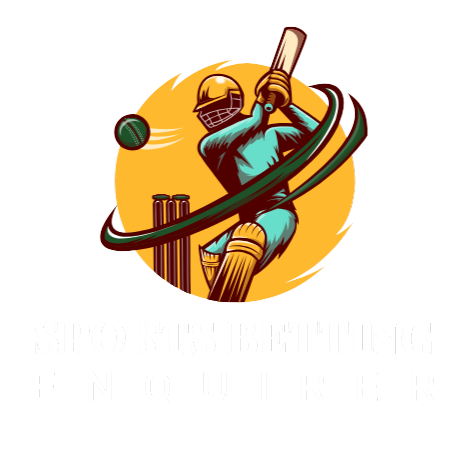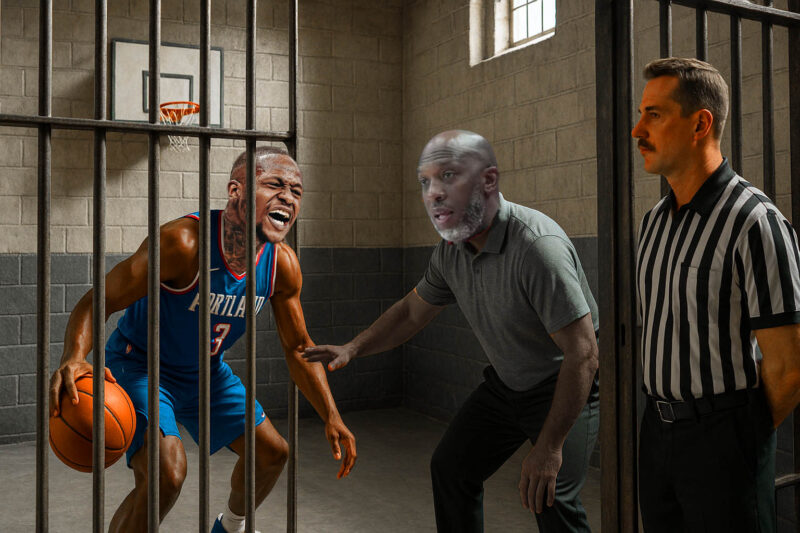Snapshot
- Two federal cases dropped on Oct 23, 2025. One is a sports-betting/prop-bet conspiracy. The other is a rigged high-stakes poker conspiracy tied to Mafia families. Department of Justice
- Terry Rozier is charged in the sports-betting case for allegedly sharing non-public status info that was used to place winning prop bets. AP News
- Chauncey Billups is charged in the poker case, not in the NBA betting case. Reuters+1
- The sports-betting indictment references an unnamed “Co-Conspirator 8” described as an Oregon resident who played in the NBA from ~1997–2014 and has been an NBA coach since 2021. Those dates align with Billups’ public career timeline, which is why confusion exploded online. But the filing does not name him. CBS Sports+1
The two cases are separate. Stop blending them.
Federal prosecutors unsealed two indictments. The sports-betting case focuses on prop-bet manipulation using inside information about player availability and minutes. The poker case focuses on tech-assisted cheating in underground games backed by traditional organized-crime families. Media reports often lumped the arrests together, which muddied the roles. Read them as distinct tracks:
- Track A: Sports-betting/prop-bet conspiracy. This filing details coordinated wagers placed after insiders learned about playing-time changes, injuries, and tanking intentions before they were public. The document lays out specific games, bet amounts, and communications. Terry Rozier is among those charged here. Department of Justice+1
- Track B: Rigged poker conspiracy. This filing describes modified shufflers, X-ray/infrared table setups, marked cards, signaling, and intimidation to extract money from high-rollers. Chauncey Billups is charged here for serving as a high-profile “face card” who helped attract wealthy players. No NBA game manipulation is alleged in this poker filing. Reuters
Keep the lanes straight: Rozier → sports-betting filing. Billups → poker filing. Mixing them is the root of most bad takes.
The heart of the NBA betting case: prop bets and non-public info
The betting case is about information advantage, not point shaving. The indictment describes a model where insiders tipped associates to minutes limits, early exits, or lineup changes. Bets were placed on unders or on opponents, often before books could adjust. One widely cited sequence involved a game where a player’s availability shifted and he exited early, with connected bets spiking on related props. AP News+1
Why books are exposed:
- Prop liquidity is thinner than sides/totals. A few sharp bets move markets fast.
- Injury/minutes info is binary and time-sensitive. Seconds matter.
- Player self-reporting creates exploitable asymmetry if the reporting channel leaks.
That’s the integrity hole leagues and sportsbooks now have to seal.
Where Chauncey Billups actually appears in the betting narrative
He doesn’t—at least not by name. The sports-betting indictment does not name Billups as a defendant. It references an unnamed “Co-Conspirator 8” whose bio lines up with Billups: Oregon-based, NBA player 1997–2014, NBA coach since 2021. It alleges that this person told a bettor the Trail Blazers would tank before it became public, including that multiple top players would sit for a March 24, 2023 game. Bettors then allegedly placed six-figure action against Portland and cashed when those players were ruled out and the Blazers lost big. CBS Sports
Context for the confusion:
- Billups’ public résumé checks every box in the description (years and coaching start). Wikipedia
- Newsrooms conflated “fits the description” with “named and charged.” He’s named and charged in the poker case. He’s not named in the sports-betting filing. Reuters
Key point for readers: Matching a description in an indictment ≠ being named as a defendant. Report what the filing actually says.
Terry Rozier’s alleged conduct is the cleanest on-paper link to prop manipulation
The filings and contemporaneous coverage detail Rozier’s alleged role: sharing non-public status information that let associates target unders and timing windows around a game where he exited early. That pattern is central to the government’s theory of fraud and money-laundering conspiracy. AP News
What that means for markets:
- Books will re-tool their injury and minutes information pipelines and slow prop posting when uncertainty spikes.
- Expect more holds on same-game parlays that use player-minute assumptions.
- In-house risk teams will expand messaging-pattern surveillance around account clusters that only fire when beatable information exists.
The poker case: why it matters here anyway
The poker case has different conduct but same ecosystem risks for sports betting:
- Celebrity bait draws whales. In betting, that same celebrity proximity becomes a leak vector.
- High-tech cheating shows the creativity level. If a ring can modify a shuffler and conceal an X-ray table, it can spoof messaging, device IDs, or location to beat prop markets.
- Organized-crime logistics supply bankrolls, runners, crypto off-ramps, and muscle that transfer well between poker fraud and betting fraud.
Billups is charged in this poker framework: a rigged-game enterprise that used star power to acquire victims. Notably, reports detail the tech stack and the Mafia families involved. Reuters
How a single paragraph in one filing created a week of headlines
The sports-betting indictment’s paragraph on “Co-Conspirator 8” is simple but potent: it sketches a precise NBA career arc and ties the unnamed person to pre-announcement tanking intel on a specific 2023 game. Because Billups’ public career matches those dates, the internet drew a straight line—then skipped the part where the filing does not name him as a defendant. CBS Sports spelled out that mismatch explicitly and noted the role appears only once in the document. CBS Sports
Bottom line for accuracy:
- Billups is a named defendant in the poker case.
- He is referenced indirectly in the betting case via a role description that matches his career, but he is not named or charged in that filing. CBS Sports+1
What leagues and books should do now
For the NBA
- Tighten info governance. Treat minutes limits, DNP decisions, and tank directives like material non-public info. Lock it down. Log access.
- Shorten injury-report latency. Force earlier, verified postings and mirror changes to sportsbooks via secure feeds to reduce exploitation windows.
- Audit staff devices and comms. Focus on game-day messaging metadata, not content. Flag unusual outbound patterns before lines move.
For sportsbooks
- Throttle prop availability when lineup uncertainty rises. Expand “no-list windows” around clubs under investigation.
- Cluster analysis on prop flows. Identify accounts that only fire during injury-report inflection points.
- Cross-venue intelligence. Build shared indicators of compromise with peers. When a syndicate lights up one book, others need the signal within minutes.
For regulators
- Codify “MNPI” in sports. Mirror securities law: non-public availability/minutes info is MNPI.
- Mandate real-time injury feed standards across leagues and operators.
- Require suspicious wagering reports for prop markets with pre-news spikes tied to insider channels.
What bettors should change right now
- Be skeptical of soft unders posted far ahead of official injury updates. If the number looks off and limits are low, you are the last one in the trade.
- Watch market microstructure. Sudden prop pulls or limit cuts before news often mean someone knows something. Stand down, not in.
- Diversify exposure. Too much prop volume around a single team or player raises account-review risk even if you are clean.
The March 24, 2023 example and how it moved money
The indictment’s “Co-Conspirator 8” paragraph centers on a Trail Blazers vs. Bulls game on Mar 24, 2023. It claims the unnamed figure told a bettor, before public reporting, that Portland would tank and sit multiple top scorers, prompting more than $100,000 in anti-Blazers wagers that ultimately cashed after status changes and a lopsided loss. The filing states this information was not available to the public or the betting companies at the time of the bets. CBS Sports
Note the mechanics:
- The edge was timing, not proprietary modeling.
- Once the injury designations flipped to “out,” the lines would have moved, removing the edge.
- This is the exact exploit prop markets are designed to punish when they catch it and pay when they miss it.
What the DOJ actually put on paper
- Sports-betting case: charges include wire-fraud conspiracy and money-laundering conspiracy built around insider information affecting NBA player props and outcomes. Department of Justice
- Poker case: charges include wire-fraud conspiracy and money-laundering conspiracy built around rigged high-stakes games using concealed technology and intimidation, with Mafia families in the mix. Billups is a named defendant here. Reuters
If you are writing policy or compliance memos, cite the press release for the sports-betting case and mainstream recaps for the poker-tech specifics. Department of Justice
Media literacy checklist for readers
When you see a headline tying Billups to “NBA game leaks,” verify three things:
- Does the article cite the sports-betting indictment directly or a secondary recap? If it is the primary document, does it actually name him or just describe a role? Department of Justice
- Does it separate the poker charges (Billups named) from the betting charges (Billups not named)? Reuters
- Does it quote the “Co-Conspirator 8” paragraph and acknowledge that it matches Billups’ timeline but stops short of naming him? If yes, that is accurate framing. CBS Sports
The likely reforms
- League policy: narrow prop menus involving minutes and “to play/not play” markets, stricter embargo rules on internal availability info, and expanded compliance training for coaches, trainers, and team ops.
- Book policy: dynamic limits on markets at high risk of inside information, heavier emphasis on account link analysis for prop runners, and faster line-freeze protocols when a team’s status data gets noisy.
- Regulatory moves: formal MNPI definitions, standardized injury-feed APIs, and shared suspicious-wagering databases across licensed books.
These steps are predictable because they mirror how financial markets responded to early insider-trading cases: restrict access, shorten reporting lags, and surveil flow patterns.
Bottom line
- Rozier is alleged to have fed non-public status info that helped win NBA prop bets. That is the core of the sports-betting case. AP News
- Billups is charged in a separate poker scheme tied to Mafia-backed rigging. He is not named as a defendant in the sports-betting indictment. The confusion comes from an unnamed “Co-Conspirator 8” whose career timeline matches Billups, and from headlines that blurred two different cases. Reuters+2CBS Sports+2
Report it cleanly: two cases, two roles, two very different sets of allegations.
Further reading (primary and major outlets):
- DOJ press release on the sports-betting case. Department of Justice
- AP explainers on the Rozier prop-bet allegations. AP News
- Reuters on Billups’ poker charges. Reuters
- Business Insider on the poker tech stack and Mafia linkages.
- CBS Sports on the “Co-Conspirator 8” description that matches Billups’ public career.



